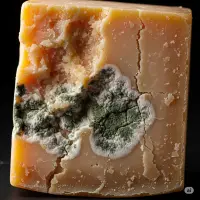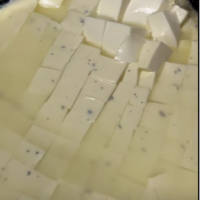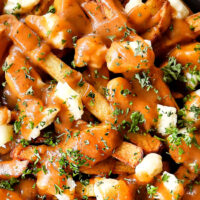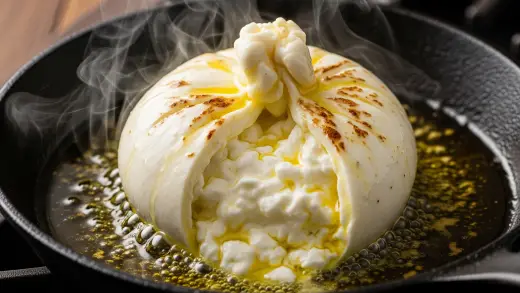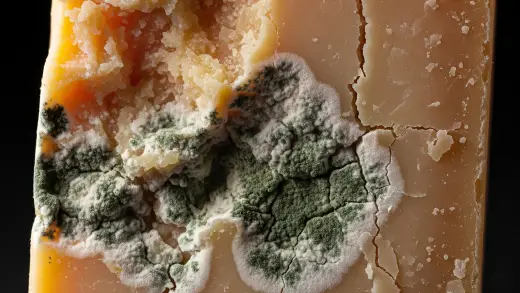Yes, you can totally eat the outside of Brie cheese, which is called the rind. It’s actually made by these cool, helpful molds during the cheese-making process.
Ever wondered about that soft, white coating on your Brie? You know, that velvety exterior that hugs the creamy goodness inside? Is it part of the delicious experience, or something you’re supposed to leave behind?
Brie cheese is super popular, loved by many for its smooth, buttery texture and mild, delightful flavor. It’s a star on cheese boards and a fantastic addition to so many snacks and meals.
So, the big question on your mind might be: Can you eat the rind of Brie?
Well, here’s the scoop: Yes, you absolutely can eat the rind of Brie! In fact, it’s often considered part of the whole delicious package and can really enhance the flavor and texture of the cheese.
In this little exploration, we’re going to chat about why that rind is perfectly safe to eat, what it typically tastes like (it might surprise you!), and some cool ways you can serve Brie to enjoy it to the fullest – rind and all! So, get ready to unlock the secrets of the Brie rind.

Can You Eat The Outside Of Brie Cheese?
Yes, the outside of Brie cheese, known as the rind, is absolutely edible.
Here’s what you should know about it:
What it is
The white, velvety rind is a result of a harmless mold called Penicillium candidum that is intentionally introduced during the cheesemaking process.
Flavor and Texture
The rind contributes a subtle, earthy, and sometimes slightly mushroomy flavor to the creamy interior. The texture is usually soft and tender.
Protection
The rind also helps to protect the cheese from unwanted microorganisms during production and aging.
Preference
While edible and safe, whether you enjoy the rind is a matter of personal preference. Some people love the flavor and texture it adds, while others prefer to eat only the creamy inside.
Etiquette
If you don’t like the rind, it’s generally considered good manners to take both the rind and the inside onto your plate and then separate them there, rather than leaving the rinds behind on a shared cheese board.
So, next time you have Brie, feel free to enjoy the entire piece, rind and all!
What Does Brie Rind Taste Like?
Generally speaking, the taste of Brie rind is often described as earthy and slightly mushroomy. It can have a mild, nutty undertone as well. Think of it as adding a bit of a rustic, grounding flavor to the rich creaminess of the Brie’s interior.
However, and this is important, the flavor intensity of the rind can really vary. Just like with the creamy part of the cheese, the rind’s taste is influenced by a few things:
- Type and Origin: A Brie made in France, for example, might have a more pronounced and complex rind flavor compared to a domestically produced one. Artisan Bries, crafted with special attention, can also showcase a wider range of rind flavors.
- Age: Younger Bries tend to have a milder rind, while more mature Bries can develop a stronger, sometimes even a bit pungent, flavor in their rind.
Because of these variations, people can have different experiences with the rind. Some folks find it very mild, almost unnoticeable, simply adding a bit of texture.
Others truly appreciate its more pronounced flavor, finding it to be a key part of the overall Brie experience, adding depth and complexity to each bite.
So, the best way to know what you think of a particular Brie rind is to give it a try! You might find it’s the perfect complement to the creamy inside.
How to Best Enjoy Brie with the Rind?
Brie is a super yummy cheese, and you can enjoy it even more by knowing the best way to serve and eat it. Let’s dive in!
To really get the most out of your Brie, you should definitely let it sit out for about 30 minutes to an hour before you plan to eat it. This brings it to room temperature, and trust me, this makes a huge difference in how flavorful and creamy it tastes!
Now, about that outer part, the rind – don’t toss it! It’s totally edible and actually adds a nice little contrast in both texture and flavor to the soft, melty inside. Eating the rind along with the creamy part gives you a much more balanced and complete Brie experience. You get that smooth richness with a slightly firmer, sometimes earthy or nutty edge – it’s a delightful combination!
When it comes to cutting Brie to serve with the rind, the goal is to make sure everyone gets a little bit of both the creamy center and the rind in their slice. Here are a couple of easy ways to do it:
- For a wedge of Brie: If you have a wedge, cut it into smaller, pie-shaped slices. This way, each piece will have a portion of the rind at the edge.
- For a round of Brie: If you have a whole round, you can cut it into wedges from the center outwards, like you would a cake. Again, this ensures everyone gets some of that tasty rind.
So, the next time you have some Brie, remember to let it warm up a bit and definitely give the rind a try along with the inside. You might just discover your new favorite way to enjoy this fantastic cheese.
Are There Any Rinds You Shouldn’t Eat? (Important Distinction)
While Brie’s bloomy rind is edible and desirable, it’s crucial to distinguish it from other types of cheese rinds that are not meant for consumption.
- Waxed Rinds: Cheeses like Gouda often have a brightly colored (red, yellow, or black) wax coating. This wax is purely for protection and preservation and is definitely not edible.
- Cloth-Bound Rinds: Some cheeses, like certain aged cheddars, are wrapped in cloth during aging.
While the cloth itself isn’t meant to be eaten, the rind that develops beneath it can sometimes be consumed, but it’s often very hard and may not be palatable. It’s best to inquire about these types of rinds.
- Artificial Coatings: Avoid eating any rinds that appear to be artificial or plastic-like. These are solely for packaging and preservation.
Always be sure you are dealing with a bloomy rind like that of Brie or Camembert, which are intentionally developed as part of the cheese.
What If You Don’t Like the Rind?
Taste is subjective, and it’s perfectly acceptable if you find that you don’t enjoy the taste or texture of Brie rind. If that’s the case, you can certainly remove it before eating the creamy interior.
However, it’s generally preferred to serve Brie with the rind intact for those who do appreciate it. Removing the rind can also cause the cheese to lose its shape and dry out more quickly.
If you’re unsure, it might be worth trying a small piece of the rind along with the cheese to see if your preference changes.
Conclusion
To summarize, the rind of Brie is indeed edible and often contributes significantly to the overall flavor and texture experience of this popular cheese. The bloomy rind, formed by beneficial mold, is safe to eat and offers earthy, mushroomy notes that complement the creamy interior.
We encourage you to try eating the rind the next time you enjoy a piece of Brie to fully appreciate its complexity.
What are your thoughts on Brie rind? Do you eat it, or do you prefer to remove it? Share your preferences in the comments below!






